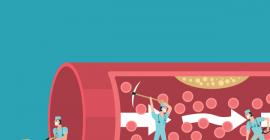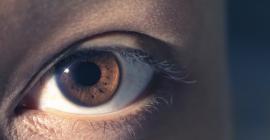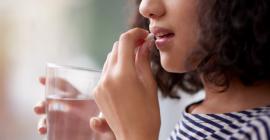"Natural" cosmetics have become a staple in many women's makeup bags, but the ingredients they contain tend to remain a mystery. Though many manufacturers are catering to shoppers looking for healthier cosmetics, some are doing it by changing what’s on the container and not necessarily what’s in it. We tap into the rapidly growing market for these products and help you achieve the seemingly impossible: decode those often indecipherable ingredient lists on the back of the label and decide for yourself whether these cosmetics really are as "natural" as they sound.
Consumer Reports no tiene ninguna relación financiera con los anunciantes en este sitio.
From 2005 to 2011, sales of “natural” cosmetics and personal-care products in the U.S. increased by almost 78%. In part, Hispanic women have contributed to this surge in sales. A Univision study on Latina beauty shows that 45% of Hispanic women believe outer beauty is a reflection of inner beauty. The study indicates that Hispanic women feel outer beauty empowers them and gives them confidence to face the world. Some other key findings of the study include: wearing makeup and looking good is essential to 69% of Hispanic women compared with 46% of the general population; 81% of Hispanic women often use multiple products in a typical day and Latinas often search for natural ingredients vs. 66% of the general population; 32% of Latinas are also willing to spend more on beauty products and equate brands that are expensive with brands that work vs. 19% of the general population. Latinas are the most likely group to say: “My face has no budget.”(1)
It appears that the cosmetics market will continue to grow given the increase in the Hispanic population in the United States. According to projections from the Census Bureau, 1 in 5 women will be Hispanic by 2020 (2).
Big companies are cashing in on the trend by rolling out new products, retooling old ones, and snapping up smaller natural cosmetics companies. Did you know that Burt’s Bees is now owned by Clorox, Tom’s of Maine got swallowed up by Colgate-Palmolive, and The Body Shop has become a unit of L’Oréal?
The $70 billion U.S. cosmetic industry is largely self-regulated, meaning that the FDA lacks the power to assess product safety and can’t even require full disclosure of ingredients or mandate recalls. Instead, the industry-funded Cosmetic Ingredient Review panel oversees cosmetics’ safety. And so far it has reviewed less than 3,500 of the more than 12,500 ingredients used. While European law prohibits more than 1,370 chemicals in cosmetics, the United States’ list only includes 11.
Adding to the problem, health complications generally result from chronic long-term exposure. Serious concerns such as reproductive harm or cancer caused by chemicals may not become apparent for 20 years or more, so the link can easily be missed.
FDA officials are becoming increasingly aware of the need to make a change. In the meantime, follow our trusty guide to choose the right products and ensure your beauty doesn't come at the cost of your health.
Queremos Conocer su Opinión
¿Cómo califica el contenido que acaba de leer/ver?
¿Qué tanto me motiva a vivir saludable?
Yo soy...
Proveedor de Salud
Administrador o Recursos Humanos – Empresa
Asegurado
Corredor de Seguros
Ninguna de las Anteriores
1. Univision, 2012. http://corporate.univision.com/2012/02/cosmetics-executive-women-agree-hispanic-consumers-must-be-a-priority/
2. US Census Bureau Population Projections. http://www.census.gov
/population/projections/data/national/2012/downloadablefiles.html. Table NP2012D_1.
Consumer Reports es una organización independiente sin fines de lucro que trabaja junto a los consumidores para crear un mundo justo, seguro y saludable. CR no apoya productos o servicios y no acepta publicidad. Copyright © 2024, Consumer Reports, Inc.
© 2024 Pan-American Life






